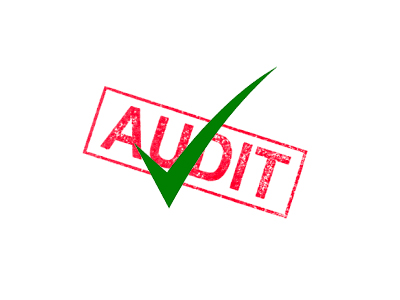Best Practices for ISO 17025 Accreditation: Preparing for Your Food Laboratory Audit (Part II)

In Part I of this article, we explored the considerations a laboratory should initially evaluate when pursuing accreditation, as well as guidance from leading industry experts on how to prepare for an ISO 17025 audit. Here we will review what comes after the on-site assessment and provide practical user-based advice for preparing a response, common areas of non-conformance, and future changes to the ISO 17025 Standard.
The Response
Once the assessor has completed the audit, they will typically hold a closing meeting on-site where they present their findings, also referred to as deficiencies or non-conformances. For each finding they will document a specific reference to the standard as evidence and provide opportunity for questions and discussion. Most assessors will be open and conversational during this final portion of the assessment; laboratories are well suited to take advantage of this time. Some assessors will even brainstorm possible responses and corrective actions while onsite; this is valuable insight for the laboratories quality team and can help them get a jump on the response.
Depending on the accrediting body, the laboratory will have a certain amount of time to respond to the findings, usually 30–60 days. The anatomy of a well-assembled response will include a full corrective action report, complete with root cause analysis. Often, the assessor will also request supporting documents and records to show the effectiveness of a corrective action. Most laboratories will have forms to help guide users through the corrective action and root cause process. It is important to have a systematic approach to ensure your corrective action is thorough and balanced.
Determining root cause is a critical part of this exercise. Erin Crowley, CSO of Q Laboratories shares their approach. “We use a variety of root cause analysis techniques, but have found for our operation the principle of the ‘5 Why’s’ is very effective,” she says. “Don’t simply answer the singular deficiency. Accrediting bodies will want to know that you have addressed all variables that might be associated with a finding. For example, if a specific incubator was out of range on a specific date, don’t just indicate that someone fixed it and move on. Assess how they addressed the issue, any impact on data, what they did to react to it, and how they are putting systems in place to prevent it from happening in the future on any other incubator. You have to show the full process.”
Implementing procedures as an outcome of a corrective action can also bring challenges to an operation. As a national multi-site reference lab, Eurofins Quality Manager Peter Dragasakis must work with other departments and locations to deploy new or changed systems for compliance. “Sometimes the most challenging part of the entire audit process is coordinating internal stakeholders across other departments such as IT or complimentary analytical departments,” he says. “Coordinating a response in a timely manner takes full organizational cooperation and support.” Communication throughout the quality and operational arms of an organization is critical to a successful response. Often, accrediting bodies and laboratories may shuttle a response back and forth a few times before everyone is satisfied with the outcome.
Common Areas of Non-Conformance: Pro-Tips
While all areas of the standard are important to a conformant operation, there are a few key areas that are frequently the focus of assessments and often bare the most findings.
Measurement Uncertainty. Depending on the laboratories Field of Testing (FOT), Measurement Uncertainty (MU) can be captured in a multitude of ways. The process aims to systematically and quantifiably capture variability in a process. For chemical analysis this is typically well defined and straightforward. For microbiological analysis the approach is more challenging. A2LA’s General Manager, Accreditation Services, Adam Gouker says the reason many labs find themselves deficient in this area is “they don’t consider all of the contributors that impact the measurement, or they don’t know where to begin or what they need to do.” Fortunately, A2LA offers categorical guidance in documents P103a and P103b (for the life sciences laboratories, two of the of many guidance documents aimed at helping laboratories devise systems and protocols for conformance.
Traceability. There are several requirements in the ISO 17025 standard around traceability. In terms of calibration conformance, which accrediting bodies seem to have emphasized in the last few years, Dragasakis offers this tip: “When requesting [calibration] services from a vendor, make sure you’re requesting 17025 accredited service. You must specify this, as several levels of service may be available, and “NIST Traceable” certificates are usually no longer sufficient.” He also advises that calibration certificates be scrutinized for all elements of compliance closely. “Some companies will simply state that it is ‘ISO 17025 compliant’, [and] this does not mean it is necessarily certified. Look for a specific reference to the accrediting body and the accreditation certificate number. Buyer beware, there is often a price difference between the different levels of calibration. Always practice due diligence when evaluating your calibration vendor and their services, and contact the calibration service if you have any questions.”
Validation vs. Verification. One of the more nuanced areas of the standard lies in determining when a test requires validation, verification, or an extension, specifically when there is a modification to a method or a sample type not previously validated by an internationally recognized organization (AOAC, AFNOR, etc.). Certified Laboratories Director Benjamin Howard reminds us, “think of validation and verification as existing on a spectrum. The more you stray away from an existing validation, the more validation work is required by the analyzing laboratory.” For example, analyzing Swiss cheese for Salmonella by a method that has already been validated for soft queso cheese may require only minimal verification or matrix extension. However, a laboratory that is altering a validated incubation time or temperature would require a much more robust and rigid validation process. Howard cautions, “Accredited laboratories must be transparent about modifications, not only on their scope of accreditation but on their reports [or CofA’s] as well. Under FSMA, companies are now accountable to the data that their laboratories generate. If you see a “modification” note on your report, perform due diligence and discuss this with your laboratory. Ensure a proper validation of the modification was performed. “Additionally, the ISO 17025 standard and accrediting bodies do not mandate how a validation or verification should be done. Laboratories should have a standalone SOP that outlines these procedures using scientifically supported justification for their approach.
CAPA / Root Cause. A good corrective action / preventive action (CAPA) and root cause (RC) analysis program is at the heart of every sound quality system. “Corrective and preventive action (CAPA) processes can either add value or steal time away from the organization according the quality of the root cause analysis,” says Vanessa Cook, quality systems manager at Tyson Foods Safety & Laboratory Services. “CAPA might be the single greatest influence on an organization’s ability to continuously improve and adapt to change if diligence is given to this activity.” Investing in resources such as ongoing training in CAPA/RC programs and techniques are key components to ensuring a robust and effective CAPA / RC program.
Continue to page 2 below.
On the Horizon: Upcoming Changes to ISO 17025
The present version of ISO 17025:2005 is currently undergoing major revision. Within the various process stages are several incremental phases of review and commenting by different ISO member economies and then updated by the ISO Working Group (WG44). The latest version is in the Draft International Standard (DIS) stage. Depending on how swiftly the comment and voting phases go, it is reasonable to suppose that the new standard could be in the hands of the international community by Fall 2017.
The proposed changes will be more philosophical and structural in nature than content. Let’s take a quick look at the proposed upcoming changes that may have a significant impact to current ISO 17025:2005 operating laboratories:
- The overall structure of the standard will move to an updated layout conformant with the ISO/CASCO guidelines for Conformity Assessment standards but still similar in structure to the ISO 9001:2015 standard. This will help dual accredited and registered / certified facilities develop their program to a single harmonized structure.
- Obligatory Requirements will include: Impartiality, Confidentiality, Complaints and Management System
- Significant emphasis will be on Risk and Opportunities, which commands a shift on how management systems are documented. ISO 9001 specifies the use of the word “documented information”, while the current ISO 17025 standard mandates procedures and policies. Under the new proposed definition of ‘documented information’, an operation could eliminate the quality manual and leave process documents to remain.
- Preventive actions will no longer exist as a separate clause, rather it becomes part of the risk and opportunities management process.
A2LA and other major accreditation stakeholders will host extensive training opportunities and transitional support to laboratories. Conformity mandates will be set at three years from the time the new ISO 17025 Standard is published. Non-accredited laboratories that are considering ISO 17025 accreditation are advised to educate themselves on the current standard and proposed standard to understand any shifts or infrastructure changes that might be required in the transition between standards as they acclimate and implement a conformant management system.
Bring It All Together
After the on-site audit, the work has just begun. For new and experienced laboratories alike, the perspectives presented here can be used to continually refine and improve quality processes:
- Have an open dialog with your assessor post-audit, ask for suggestions and ideas for the response
- Employ a standardized corrective action program to remain organized and thorough
- Perform a robust RC analysis, considering all factors and future implications
- Keep all internal stakeholders involved in the process; cross departmental cooperation is key to a successful audit outcome and ultimately, a quality program
- Review common areas of non-conformance and challenge your process before the assessment occurs.
- Stay abreast of industry changes and ISO 17025 standard requirements. Work with your accrediting body to understand the impact to your operation and take advantage of training opportunities that may be offered.
Resources
- “ISO 17025:2005 / AOAC International Guidelines for Laboratories Performing Microbiological and Chemical analysis of Food and Pharmaceuticals – An Aid to Interpretation of ISO / IEC 17025:2005” March 2010 ALAAC Revision.
- Gust, J., Osborne, T, “NCSL International ISO/CASCO Working Group 44” Metrologist. April 2016: 32-33.
- A2LA, Form I105 “Typical Steps in Preparing for the Accreditation Process.” May 2015. Document.
- A2LA, Policy P103 “Policy on Estimating Measurement Uncertainty for Testing Laboratories”
- A2LA, Policy P103b “Annex Policy on Estimating Measurement Uncertainty for Life Science Testing Labs” September 2010. Document.
Acknowledgements
A special thanks to the industry experts that contributed their knowledge and perspective to this article:
- Peter Dragasakis, Quality Manager, Eurofins Microbiology Laboratories
- Erin Crowley, Chief Scientific Officer, Q Laboratories
- James Agin, Director of Regulatory Compliance, Q Laboratories
- Benjamin Howard, Laboratory Director, Certified Laboratories of the Midwest
- Jerri Lynn Pickett, Senior Microbiologist, Tyson Foods Safety & Research Lab
- Vanessa Cook, Quality Systems Manager, Tyson Foods Safety & Laboratory Services
- Adam Gouker, General Manager, Accreditation Services, A2LA
- Tim Osborne, Senior Director of Training Services, A2LA
- Dr. Stan Bailey, Sr. Director Scientific Affairs, bioMérieux Industry
